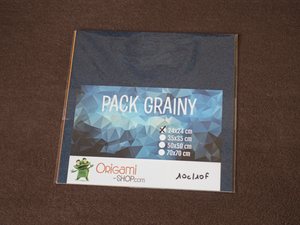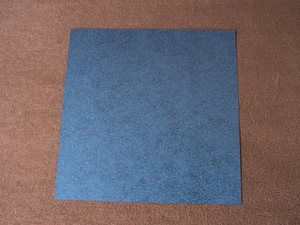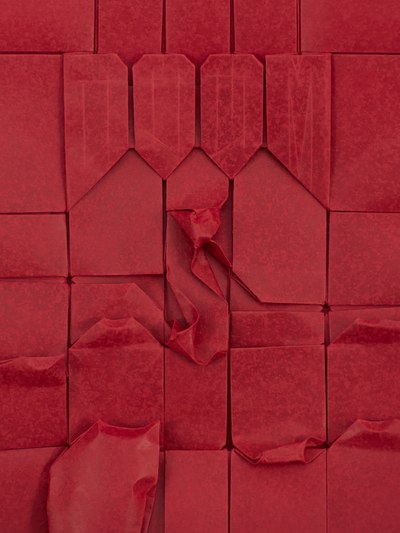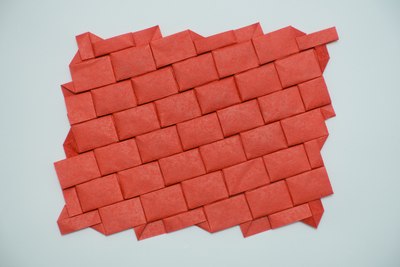Grainy Paper Review





This review of Grainy Paper is based on my folding of two models so far, Doom and Shifted Bricks. I decided to show not only pictures of origami models folded from the paper under review, but also pictures of the paper itself this time. I also use some terms introduced in my recent Paper Grain in Origami post (the paper’s name being Grainy is just a coincidence, though).
The most prominent feature of Grainy Paper is its strong texture of glossy speckles which resemble small puddles or drops of water. It is very decorative and gives even large flat areas of the paper an interesting look. This texture is present on both sides, and is visibly 3D. Its roughness can be felt while folding, but has not caused me any issues with folding precision. The texture seems to be a surface layer sprinkled onto the paper rather than in the paper’s body itself, and the sheets have a very slightly plasticky feel to them, but that was not a distraction at all and folding Grainy was pleasant overall. It still felt much more like folding paper than plastic. Despite being glossy, the texture did not cause me much trouble when I was taking pictures, except for creating some specular highlights in direct sunlight, but under such conditions, hardly any paper can avoid them.
The paper is thick (rated at 115 gsm), and bending resistance is noticeable, even parallel to the grain, but it still appeared easier to fold than the thickness would imply. Likewise, the difference in bending resistance between folding parallel and perpendicular to the grain was smaller than I expected. Surprisingly, this paper has good bendability (the ability to be bent without creating a crease), which made cleanly precreasing my models easy.
Creases are clean and crisp, and even closely-packed creases could be folded precisely. Reversing creases was also easy. Creases are the color of the paper, so not very much visible. While I was precreasing, the sheets stretched only slightly, and kept their geometry well. Grainy Paper also exhibited good memory, with folds staying in place, and shaping working out well. Perhaps the slight “plasticky” element in the paper is responsible for these good folding properties.
Collapsing my models was easy since the paper is quite stiff (this does not always go hand-in-hand with bendability, but here it does). This was especially important for Shifted Bricks model which starts out as a corrugation and requires a lot of stiffness from the paper in the parts far from the edges to collapse cleanly.
I used only a little wet shaping in Doom model, so it’s a small sample to judge from, but that little I did wet-fold worked out well.
Overall, I found this paper very good for tessellations. It’s thick and stiff but at the same time allowed for precise folding and exhibited good bendability, which is not a combination often found in a single type of paper. It has a very nice texture and is available in a number of elegant, but still quite vivid colors. This combination of well-balanced folding properties and great looks will probably lead me to using Grainy Paper more often.
Comments